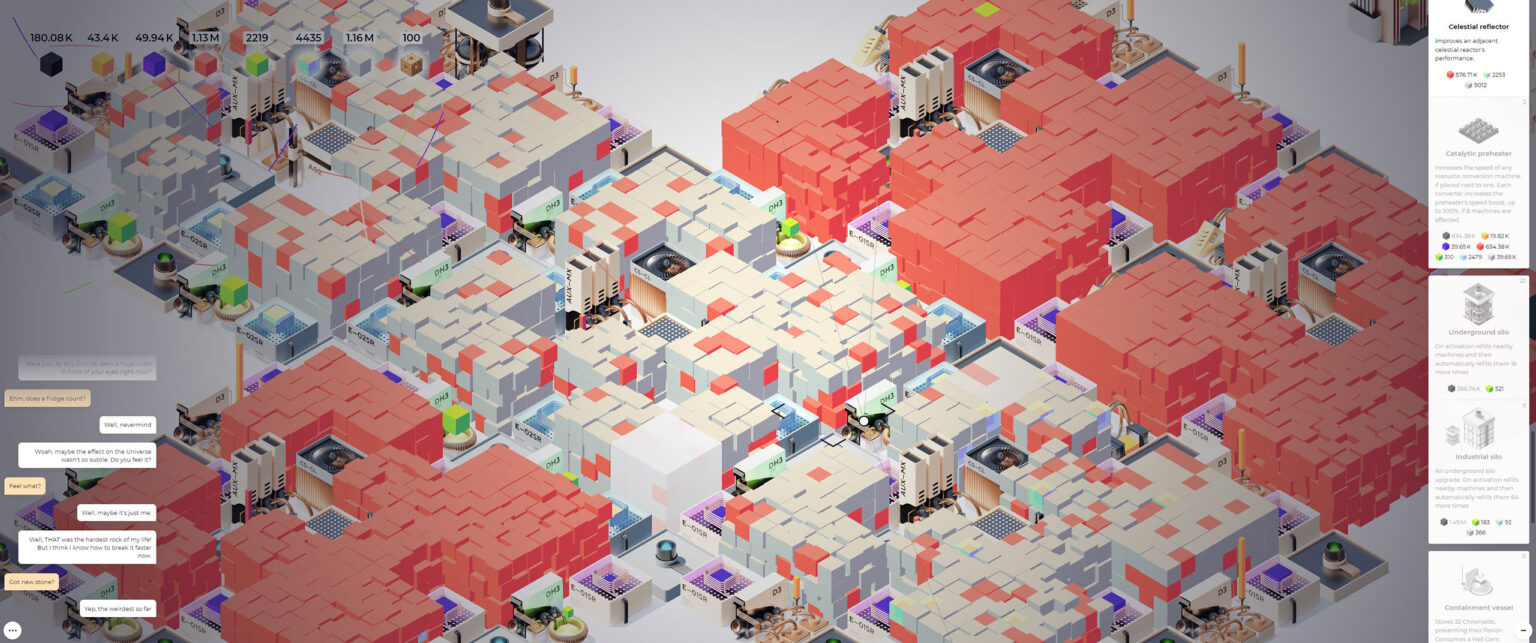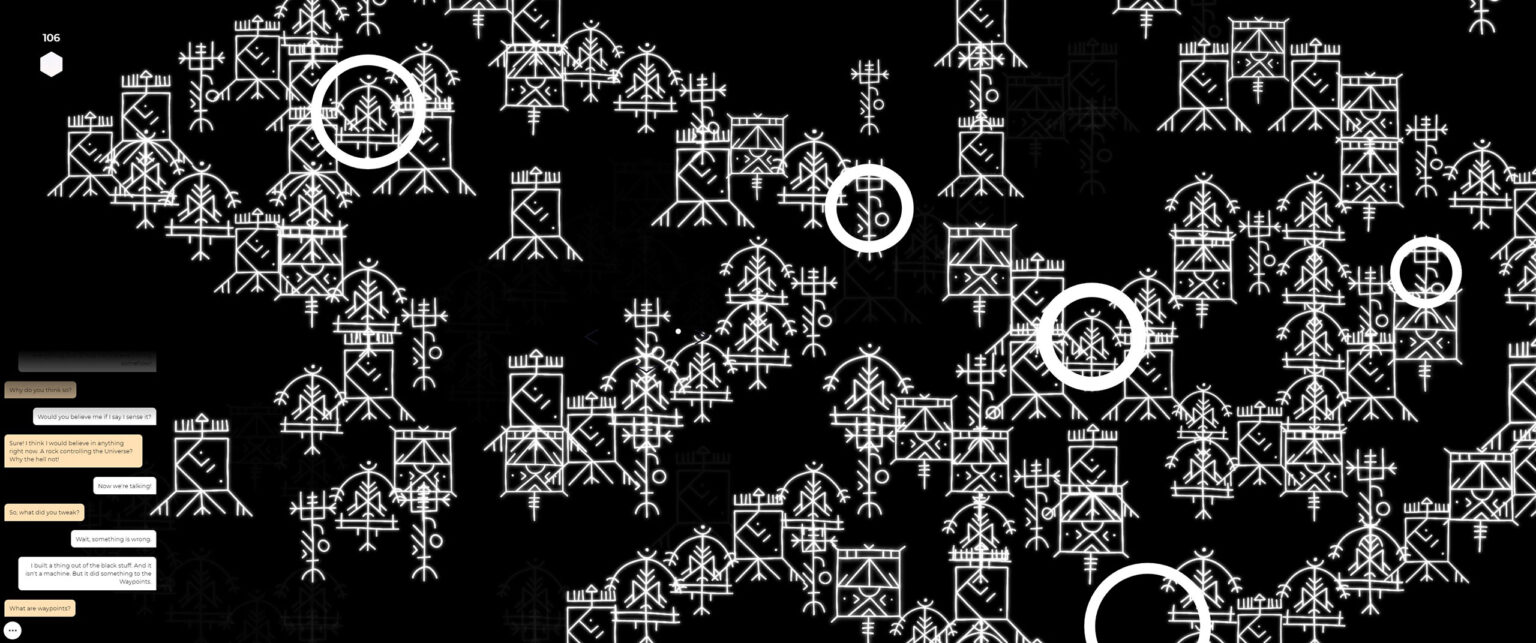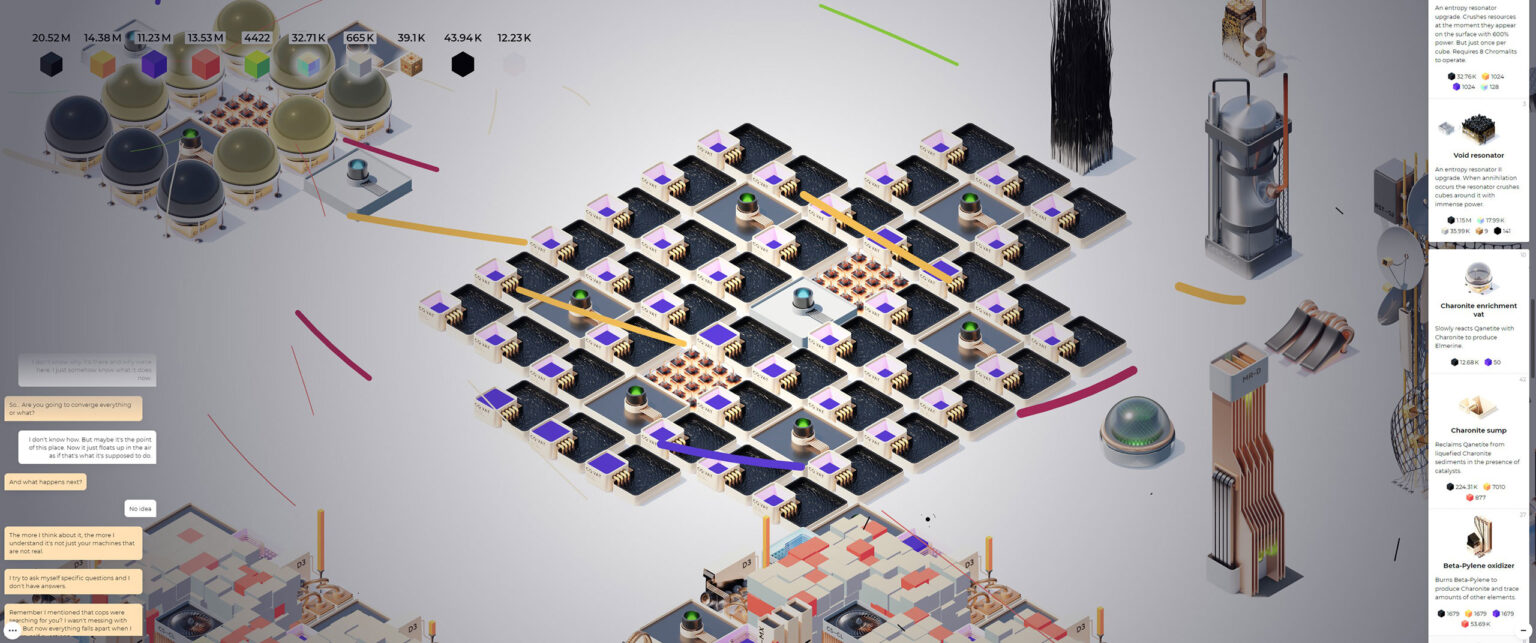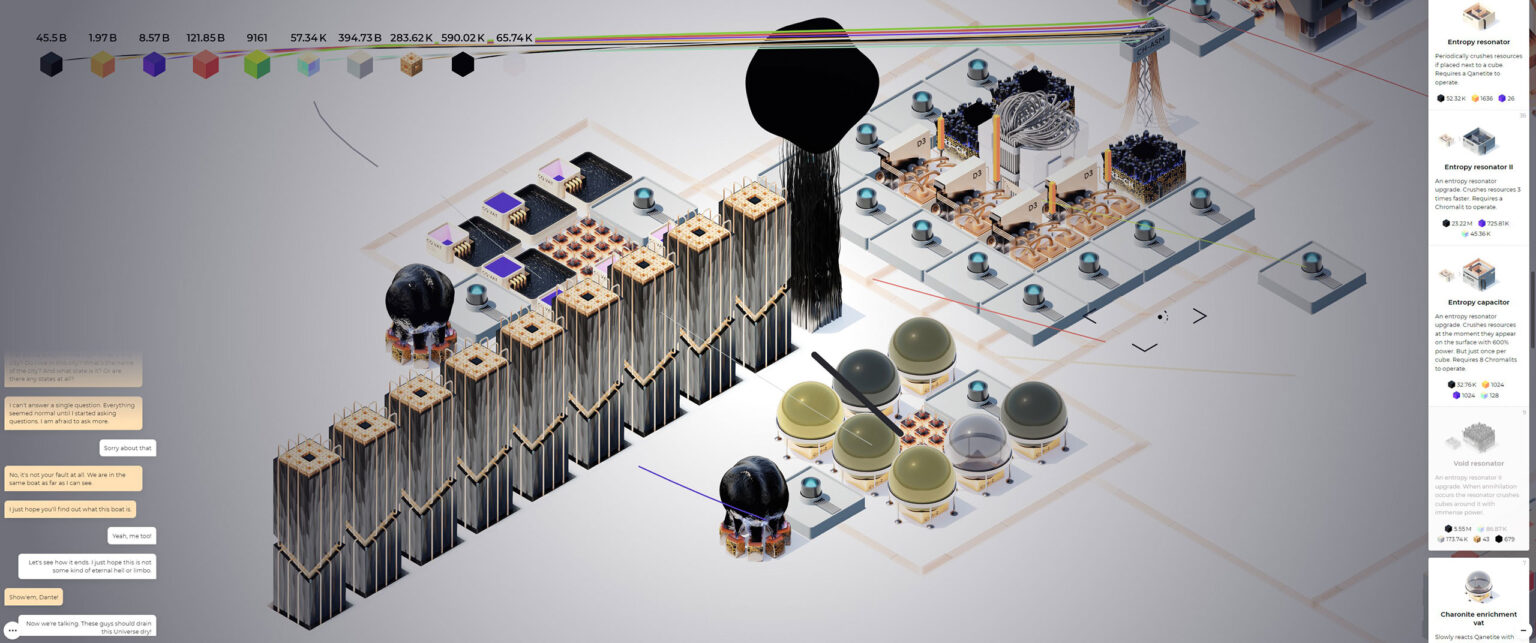Quick Verdict
I found Sixty Four to be a unique take on the idler, clicker, and incremental genre, with a touch of factory automation. It evolves as you play, starting off as a clicker game before transitioning to some idling, with full automation as the final goal. Sixty Four has all the right pieces to be a compelling—and admittedly addicting—game, though I personally found that these pieces were presented in the wrong order. After spending over 45 hours experimenting with the game before finishing it, I believe Sixty Four has room for improvement.
Eight Squared

The LEGO brick, as we know it today, was first introduced in 1958. Its interlocking principle, which uses tubes, offers unlimited building possibilities. When you look at a single LEGO brick, it’s a very basic concept. Dump an entire bag of LEGO bricks onto a desk, and you are essentially limited only by your creativity in what you can build. While it may seem a bit disingenuous to compare video game development to building with LEGO bricks, there are indeed some similarities. All games start with a basic foundation, and as development progresses, more blocks are added. Sometimes, game development doesn’t go smoothly, which shows in the end product; other times, the final product manages to conceal a messy development process.
Sixty Four, a solo developer creation by Oleg Danilov, deserves praise on its own. Having friends who have created successful games, I’m well aware of how challenging the process can be, even with modern tools. Envisioning something in your head is always easy, but bringing it to life is an entirely different challenge. LEGO creations are similar in that sense. I can easily close my eyes and envision a Star Destroyer, but I wouldn’t know where to begin assembling one without a step-by-step manual. However, there are talented individuals who can build LEGO creations without instructions, just as there are skilled developers like Oleg Danilov, who can single-handedly create a game.
Bricking Bad

The concept of Sixty Four is very much like building a creation with LEGOs. However, you don’t actually know what you’re trying to build, and you don’t have all the LEGO bricks from the start. The game begins with a simple machine that generates cubes when you click on it. By clicking to destroy these cubes, you’ll obtain resources. This concept isn’t novel, as it forms the basic foundation of any incremental game. Where Sixty Four gets interesting is when you start generating different resources and unlocking new technology. The first few hours of the game do a fantastic job of hooking you in. The descriptions for the buildings are intentionally vague, and although I found this annoying, I can appreciate the developer’s insistence on having players figure things out on their own. There is very little hand-holding and experimentation is key. If you’re the type who wants to be told exactly what to do through tutorial quests, Sixty Four is not going to be the game for you.
Aesthetically, Sixty Four has a very clean style and everything is pleasing to look at. The artwork and design is crisp, but I was not a fan of the fixed isometric view and not having the ability to rotate the camera. I understand there’s even a bit of a lore-based reason for this, but I feel that something so detrimental to the user experience should be addressed more effectively. I say more effectively because while the game does allow you to hold down the Alt key to outline specific buildings, planning a complex factory build or ensuring precise placement of buildings can become frustrating without being able to rotate the camera.
Regarding lore, Sixty Four offers a bit of story through text messages displayed in the lower left-hand corner of the game’s window. You essentially have a conversation with someone as you try to uncover exactly what’s happening with these cubes. I found it mildly entertaining, but don’t expect it to reveal much about the game’s mysteries.
Build, Break, Repeat

Initially, the game presents an interesting loop for the first 10 or so hours. You start unlocking more and more technology and other resources as you dig deeper. However, as you dig deeper, you no longer acquire the previous tier of resources, making it necessary to convert excess resources into those that are needed. The conversion ratios are generally favorable, but this is the point where the game starts to become tedious. Since complete automation isn’t yet possible, you must constantly manage the clicking of these buildings to convert multiple resources into the ones you need. I attempted to offset this by building multiple factories to restart the digging process, but it’s clear this is not the solution. The game ultimately wants you to accumulate the earlier resources through conversion.
Moreover, the materials required to build certain factories increase exponentially, resulting in much more waiting for resources to accumulate or convert. While it’s possible that my setup for converting resources wasn’t optimal or effective, I don’t believe that justifies the slow pace. A game like this should be designed to foster player creativity; while optimal builds are necessary, even the least effective builds should still be reasonable. I believe some balancing in how many resources are required for certain buildings would go a long way to smoothening the experience.
However, my biggest criticism is that full automation is introduced too late in the game. Eventually, you’ll unlock the ability to connect your silos together so that they automatically refill themselves and the buildings that they are connected to, which means your factory is fully automated. Now, for many, this phase becomes boring, transforming it into a mere idle game where you wait for numbers to increase to build the next set of structures. Sixty Four actually addresses this in a clever way with an annihilation mechanic that limits the quantity you can hold for certain resources. This introduces a problem-solving element as you figure out how to place the next building on the screen.
Between a Brick and a Hard Place

As I progressed toward the end of Sixty Four, I couldn’t help but wonder why the concepts introduced in the final quarter of the game weren’t present throughout. To me, Sixty Four would have offered a more consistent experience if it presented a problem to solve for each resource tier. As you dig deeper and realize you are no longer accumulating a certain resource type, the game should give you the necessary tools to fully automate generating that resource. Only then should you progress to automating the next resource type. Too often, I knew what I wanted to do but had to wait hours to convert the necessary resources. I would have appreciated a puzzle connected to each resource, making the continuous expansion of the factory more satisfying.
Now, here’s the thing: while that is my personal preference, I can understand why the developer chose a different approach. My preferred approach would make Sixty Four similar to Factorio—one of the best games I’ve ever played—where players must figure out how to automate one resource before moving on to the next. Perhaps because I’ve spent many hours in games like Factorio, I wished Sixty Four was more similar. I think this is important to mention, because those who are expecting a Factorio-like experience with Sixty Four will likely be disappointed, because it doesn’t come until much later in the game.
Early on, Sixty Four did a fantastic job of engaging and tickling my brain. However, the middle section of the game felt bogged down, and I truly believe it could be improved. Personally, I believe conductors should be unlocked much earlier, as there are many other challenges beyond merely accumulating resources. As I mentioned earlier, all the pieces are there for Sixty Four to be a very compelling experience in the incremental genre, but as it stands, the balance feels a bit off. Since its release on March 4, the developer has frequently updated the game, introducing quality of life features and adjustments to scaling. I started playing the game after its most recent patch on March 18, so I’m already experiencing many of those changes. I’m assuming it’s a better experience since launch, but hopefully Oleg Danilov continues to improve on the game. I’m excited to revisit it in a few months to see how it has progressed.
As it stands, it’s an entry worth considering if you enjoy games in the clicker, idler, and incremental genre. Just understand that Sixty Four doesn’t put all its eggs in one of those baskets, but rather transitions from one to another, for better or worse.
Sixty Four was released on March 4, 2024 on PC. This review is based on a retail code provided by Jesús Fabre. While FullCleared has affiliate partnerships, these do not influence our editorial content. We may, however, earn commissions for products purchased via affiliate links.






















